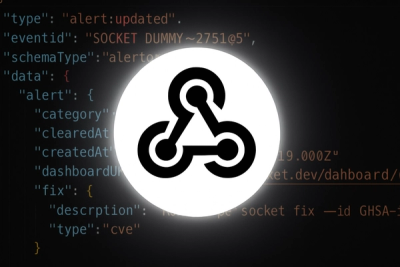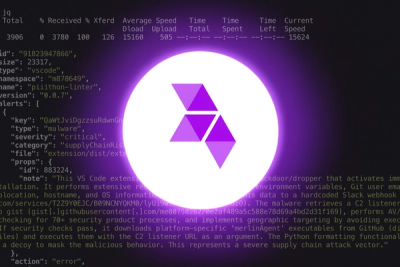
Product
Introducing Webhook Events for Alert Changes
Add real-time Socket webhook events to your workflows to automatically receive software supply chain alert changes in real time.
@anilanar/resize-observer
Advanced tools
Polyfills the ResizeObserver API and supports box size options from the latest spec





A minimal library which polyfills the ResizeObserver API and is entirely based on the latest Draft Specification.
It immediately detects when an element resizes and provides accurate sizing information back to the handler. Check out the Example Playground for more information on usage and performance.
The latest Resize Observer specification is not yet finalised and is subject to change. Any drastic changes to the specification will bump the major version of this library, as there will likely be breaking changes. Check the release notes for more information.
npm i @juggle/resize-observer
import { ResizeObserver } from '@juggle/resize-observer';
const ro = new ResizeObserver((entries, observer) => {
console.log('Body has resized!');
observer.disconnect(); // Stop observing
});
ro.observe(document.body); // Watch dimension changes on body
This will use the ponyfilled version of ResizeObserver, even if the browser supports ResizeObserver natively.
import { ResizeObserver } from '@juggle/resize-observer';
const ro = new ResizeObserver((entries, observer) => {
console.log('Elements resized:', entries.length);
entries.forEach((entry, index) => {
const { inlineSize: width, blockSize: height } = entry.contentBoxSize[0];
console.log(`Element ${index + 1}:`, `${width}x${height}`);
});
});
const els = document.querySelectorAll('.resizes');
[...els].forEach(el => ro.observe(el)); // Watch multiple!
The latest standards allow for watching different box sizes. The box size option can be specified when observing an element. Options include border-box, device-pixel-content-box and content-box (default).
import { ResizeObserver } from '@juggle/resize-observer';
const ro = new ResizeObserver((entries, observer) => {
console.log('Elements resized:', entries.length);
entries.forEach((entry, index) => {
const [size] = entry.borderBoxSize;
console.log(`Element ${index + 1}:`, `${size.inlineSize}x${size.blockSize}`);
});
});
// Watch border-box
const observerOptions = {
box: 'border-box'
};
const els = document.querySelectorAll('.resizes');
[...els].forEach(el => ro.observe(el, observerOptions));
From the spec:
The box size properties are exposed as sequences in order to support elements that have multiple fragments, which occur in multi-column scenarios. However the current definitions of content rect and border box do not mention how those boxes are affected by multi-column layout. In this spec, there will only be a single ResizeObserverSize returned in the sequences, which will correspond to the dimensions of the first column. A future version of this spec will extend the returned sequences to contain the per-fragment size information.
contentRect)Early versions of the API return a contentRect. This is still made available for backwards compatibility.
import { ResizeObserver } from '@juggle/resize-observer';
const ro = new ResizeObserver((entries, observer) => {
console.log('Elements resized:', entries.length);
entries.forEach((entry, index) => {
const { width, height } = entry.contentRect;
console.log(`Element ${index + 1}:`, `${width}x${height}`);
});
});
const els = document.querySelectorAll('.resizes');
[...els].forEach(el => ro.observe(el));
You can check to see if the native version is available and switch between this and the polyfill to improve performance on browsers with native support.
import { ResizeObserver as Polyfill } from '@juggle/resize-observer';
const ResizeObserver = window.ResizeObserver || Polyfill;
// Uses native or polyfill, depending on browser support.
const ro = new ResizeObserver((entries, observer) => {
console.log('Something has resized!');
});
To improve this even more, you could use dynamic imports to only load the file when the polyfill is required.
(async () => {
if ('ResizeObserver' in window === false) {
// Loads polyfill asynchronously, only if required.
const module = await import('@juggle/resize-observer');
window.ResizeObserver = module.ResizeObserver;
}
// Uses native or polyfill, depending on browser support.
const ro = new ResizeObserver((entries, observer) => {
console.log('Something has resized!');
});
})();
Browsers with native support may be behind on the latest specification. Use
entry.contentRectwhen switching between native and polyfilled versions.
Resize Observers have inbuilt protection against infinite resize loops.
If an element's observed box size changes again within the same resize loop, the observation will be skipped and an error event will be dispatched on the window. Elements with undelivered notifications will be considered for delivery in the next loop.
import { ResizeObserver } from '@juggle/resize-observer';
const ro = new ResizeObserver((entries, observer) => {
// Changing the body size inside of the observer
// will cause a resize loop and the next observation will be skipped
document.body.style.width = '50%';
});
// Listen for errors
window.addEventListener('error', e => console.log(e.message));
// Observe the body
ro.observe(document.body);
Notifications are scheduled after all other changes have occurred and all other animation callbacks have been called. This allows the observer callback to get the most accurate size of an element, as no other changes should occur in the same frame.

To prevent constant polling, every frame. The DOM is queried whenever an event occurs which could cause an element to change its size. This could be when an element is clicked, a DOM Node is added, or, when an animation is running.
To cover these scenarios, there are two types of observation. The first is to listen to specific DOM events, including resize, mousedown and focus to name a few. The second is to listen for any DOM mutations that occur. This detects when a DOM node is added or removed, an attribute is modified, or, even when some text has changed.
This allows for greater idle time, when the application itself is idle.
:hover, :active and :focus. |  |  |  |  |  |  |
|---|---|---|---|---|---|---|
| Chrome | Safari | Firefox | Opera | Edge | Edge 12-18 | IE11 IE 9-10 (with polyfills)** |
 |  |  |  |  |  |  |
|---|---|---|---|---|---|---|
| Chrome | Safari | Firefox | Opera | Opera Mini | Edge | Samsung Internet |
*If other interaction occurs, changes will be detected.
**IE10 requires additional polyfills for Map and MutationObserver. IE9 requires IE10 polyfills plus requestAnimationFrame. For more information, see issue here.
FAQs
Polyfills the ResizeObserver API and supports box size options from the latest spec
We found that @anilanar/resize-observer demonstrated a not healthy version release cadence and project activity because the last version was released a year ago. It has 1 open source maintainer collaborating on the project.
Did you know?

Socket for GitHub automatically highlights issues in each pull request and monitors the health of all your open source dependencies. Discover the contents of your packages and block harmful activity before you install or update your dependencies.

Product
Add real-time Socket webhook events to your workflows to automatically receive software supply chain alert changes in real time.

Security News
ENISA has become a CVE Program Root, giving the EU a central authority for coordinating vulnerability reporting, disclosure, and cross-border response.

Product
Socket now scans OpenVSX extensions, giving teams early detection of risky behaviors, hidden capabilities, and supply chain threats in developer tools.